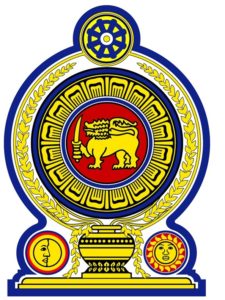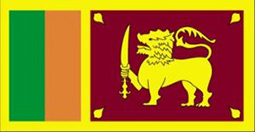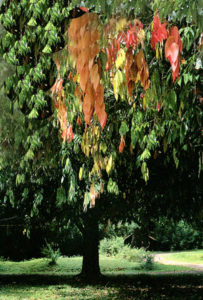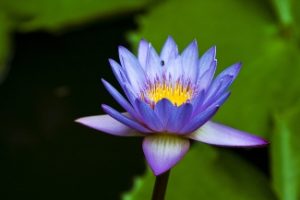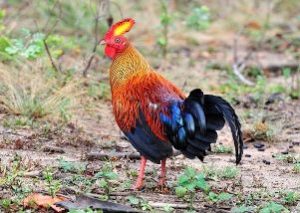


SRI LANKA PROFILE
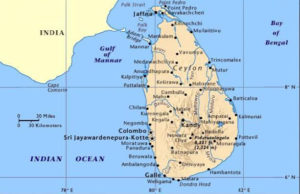
Set in the Indian Ocean in South Asia, the tropical island nation of Sri Lanka has a history dating back to the birth of time. It is a place where the original soul of Buddhism still flourishes and where nature’s beauty remains abundant and unspoilt.
Few places in the world can offer the traveller such a remarkable combination of stunning landscapes, pristine beaches, captivating cultural heritage and unique experiences within such a compact location. Within a mere area of 65,610 kilometres lie 8 UNESCO World Heritage Sites, 1,330 kilometres of coastline – much of it pristine beach – 15 national parks showcasing an abundance of wildlife, nearly 500,000 acres of lush tea estates, 250 acres of botanical gardens, 350 waterfalls, 25,000 water bodies, to a culture that extends back to over 2,500 years.
This is an island of magical proportions, once known as Serendib, Taprobane, the Pearl of the Indian Ocean, and Ceylon. Discover refreshingly Sri Lanka!
The economy is transitioning from a predominantly rural-based economy towards a more urbanized economy oriented around manufacturing and services. The country has made significant progress in its socio-economic and human development indicators.Social indicators rank among the highest in South Asia and compare favorably with those in middle-income countries.
History:
Recent excavations show that even during the Neolithic Age, there were food gatherers and rice cultivators in Sri Lanka. Very little is known of this period documented history began with the arrival of the Aryans from North India. The Aryans introduced the use of iron and an advanced form of agriculture and irrigation. They also introduced the art of government. Of the Aryan settlements, Anuradhapura grew into a powerful kingdom under the rule of king Pandukabhaya. According to traditional history he is accepted as the founder of Anuradhapura.
During the reign of King DevanampiyaTissa, a descendent of Pandukabhaya, Buddhism was introduced in 247 B.C. by ArahatMahinda, the son of Emperor Asoka of India. This is the most important event in Sri Lankan history as it set the country on the road to cultural greatness. As a new civilization flourished Sri Lanka became rich and prosperous.
In the mid 2nd century B.C. a large part of north Sri Lanka came under the rule of an invader from South India. From the beginning of the Christian era and up to the end of the 4th century A.D. Sri Lanka was governed by an unbroken dynasty called Lambakarna, which paid great attention to the development of irrigation. A great king of this dynasty, Mahasen (3rd century A.D.) started the construction of large `tanks’ or irrigation reservoirs. Another great `tank’ builder was Dhatusena, who was put to death by his son Kasyapa who made Sigiriya a royal city with his fortress capital on the summit of the rock.
As a result of invasions from South India the kingdom of Anuradhapura fell by the end of the 10th century A.D. Vijayabahu 1 repulsed the invaders and established his capital at Polonnaruwa in the 11th century A.D. Other great kings of Polonnaruwa were ParakramaBahu the Great and NissankaMalla both of whom adorned the city with numerous buildings of architectural beauty.
Invasion was intermittent and the capital was moved constantly until the Portuguese arrived in 1505, when the chief city was established at Kotte, in the western lowlands. The Portuguese came to trade in spices but stayed to rule until 1656 in the coastal regions, as did the Dutch thereafter. Dutch rule lasted from 1656 to 1796, in which year they were displaced by the British. During this period the highland Kingdom, with its capital in Kandy, retained its independence despite repeated assaults by foreign powers who ruled the rest of the country. In 1815 the kingdom of Kandy was ceded to the British and thus they established their rule over the whole island. Modern communications, western medical services, education in English, as well as the plantation industry (first coffee then tea, rubber and coconut) developed during British rule. By a process of peaceful, constitutional evolution, Sri Lanka won back her independence in 1948 and is now a sovereign republic, with membership in the Commonwealth of Nations and the United Nations Organization.
| Conventional long form |
Democratic Socialist Republic of Sri Lanka |
| Conventional short form |
Sri Lanka |
| Former |
Ceylon |
| Government Type |
Republic |
| Independence |
04 February 1948 |
| Location |
An island off the south-eastern cost shores of India, 880 km north of the equator, in the Indian Ocean. It lies between 5° 55′ and 9° 55′ north of the equator and between the eastern longitudes 79° 42′ and 81° 52′. |
| Dimensions |
430km North to South, 225km East to West |
| Area |
65,610 sq km |
| Terrain | Mostly low, flat to rolling plain; mountains in south-central interior |
| Climate & Seasons | In the lowlands the climate is typically tropical with an average temperature of 27°C in Colombo. In the higher elevations it can be quite cool with temperatures going down to 16°C at an altitude of nearly 2,000 metres. Bright, sunny warm days are the rule and are common even during the height of the monsoon – climatically Sri Lanka has no off season. The south west monsoon brings rain mainly from May to July to the western, southern and central regions of the island, while the north-east monsoon rains occur in the northern and eastern regions in December and January. |
| Highest Mountain | Pidurutalagala, 2,524 m |
| Highest Waterfall | Bambarakanda, 263 m |
| Population | 21.4 Million (Mid-year population in 2016) |
| Population Growth Rate | 1.3% |
| Population Density | 309 people per sq km |
| Life Expectancy at Birth | 76.4 female, 71.7 male (2001 est) |
| Literacy Rate | 92.7 % (2003 est) |
| Ethnic Groups | Sinhalese 74.9%, Sri Lankan Tamil 11.2%, Sri Lankan Moors 9.2%, Indian Tamil 4.2%, other 0.5% (2012 est.) |
| Languages | Sinhala (official and national language) 74%, Tamil (official and national language) 18%, other 8% Note: English (a link language commonly) is used in government and spoken competently by about 10% of the population. |
| Religion | Buddhist (official) 70.2%, Hindu 12.6%, Muslim 9.7%, Roman Catholic 6.1%, other Christian 1.3%, other 0.05% (2012 est.) |
| Currency (code) | Sri Lankan Rupee (LKR) |
| Time Zone | Sri Lanka Standard Time is five and a half hours ahead of GMT |
| International Dialing | +94 |
| Electricity | 230. 240 volts, 50 cycles AC. |
| Gross Domestic Product (GDP) | (Purchasing Power Parity): $275.8 billion (2017 est.) |
| Gross Domestic Product (GDP) | (Official Exchange Rate): $87.35 billion (2017 est.) |
| Gross Domestic Product (GDP) | Real growth rate: 3.3% (2017 est.) |
| Agriculture – products | Rice, sugarcane, grains, pulses, oilseed, spices, vegetables, fruit, tea, rubber, coconuts; milk, eggs and fish |
| Industries | Processing of rubber, tea, coconuts, tobacco and other agricultural commodities; telecommunications, insurance, banking; tourism, shipping; clothing, textiles; cement, petroleum refining, information technology services, construction |
| Exports – partners | US 24.6%, UK 9%, India 5.8%, Singapore 4.5%, Germany 4.3%, Italy 4.3% (2017) |
| Exports – commodities | Textiles and apparel, tea and spices; rubber manufactures; precious stones; coconut products, fish |
| Imports – commodities | Petroleum, textiles, machinery and transportation equipment, building materials, mineral products, foodstuffs |
| Imports – partners | India 22%, China 19.9%, Singapore 6.9%, UAE 5.7%, Japan 4.9% (2017) |
National Symbols of Sri Lanka
Sri Lanka National Emblem:
The National Emblem of Sri Lanka was adopted in 1972. It features a golden lion in the centre, surrounded by petals of gold representing the blue lotus flower.
The base of the emblem is a traditional grain vase sprouting sheaves of rice. Sinhalese heraldic symbols of the sun and moon flank either side of the vase, and the crest of the Dharmachakra at the top represents Buddhism.
Sri Lanka National Flag:
The National Flag of Sri Lanka represents the country and her heritage as rallying device that integrates the minorities with the majority race.
Sri Lanka National Flag is an improvisation of the civil standard of the last king of Sri Lanka, Sri WickramaRajasingha.
The civil standard had a passant royal lion with a sword in it’s right fore paw at the center, and a bo-leaf on each of the four corners on a plain border.
When Sri Lanka gained her independence from Great Britain on February 04, 1948, it was the lion flag of the last king of Sri Lanka was hoisted once again.
The first Prime Minister of independent Sri Lanka, D.S.Senanayake, appointed a committee to advice the government on the design of a new national flag. The design approved by the committee in February 1950 retained the symbol of the lion with the sword and the bo-leaves from the civil standard of the last king of Sri Lanka, with the inclusion of two vertical stripes green and orange in color.
The significance of each symbol of the national flag is as follows:
- The lion in the flag represents the Sinhala race.
- The sword of the lion represents the sovereignty of the country.
- Curly hair on the lion’s head indicates religious observance, wisdom and meditation.
- The beard denotes purity of words.
- The handle of the sword highlights the elements of water, fire, air and earth.
- The nose indicates intelligence.
- The two front paws purport to purity in handling wealth.
- The vertical stripe of orange represent the minority Tamil race and the green vertical stripe the minority Muslim race.
- The four virtues of kindness: KINDNESS, FRIENDLINESS, HAPPINESS, EQUANIMITY are also represented in the flag.
- The border round the flag, which is yellow in color, represents other minor races.
- The bo-leaves at the four corners of the flag represent Buddhism and it’s influence on the nation. They also stand for the four virtues – Kindness, Friendliness, Happiness and Equanimity.
- The maroon colored portion of the flag manifests the other minor religions.
The national flag was hoisted for the first time on March 3, 1950.
Sri Lanka National Tree:
The Ironwood (Na Tree), botanically known as ”MesuaNagassarium” was declared the National Tree on 26th February 1986.
It was chosen as the National Tree for several reasons.
- It is a tree which originated in Sri Lanka
- Its utility
- Historic and cultural importance
- Exterior posture
- Wide distribution
- Colour and nature
- Ability to draw and sketch it easily
This rain forest tree grows to about 30 m high and indigenous to the lower wet Zone of Sri Lanka. Remarkable Features of NA is beautiful bright Red Leaves and finally matured in to a deep green. Timber has a very hardness and durability and used to make bridges in the early times. Now it is not allowed to use for timber due to its religious value. The flower of NA is also used in herbal medicine and preparation of perfumes, cosmetics and soaps.
It is believed that the first visit of Buddha was to grove of a NA Tree at Miyanganaya and also the next Buddha (Mithriya) will attain enlightenment under a NA tree.
Sri Lanka National Flower:
The “Nil Mahanel” flower, botanically known as “NympheaeStellata” was declared the National Flower of Sri Lanka on 26th February 1986.
Sri Lanka National Bird:
Sri Lanka Jungle Fowl – Very colorful ground bird, endemic to Sri Lanka is the national bird of Sri Lanka. Distributed commonly in Sri Lanka’s jungle and dense scrub throughout. Roosts high in trees at nights.Flies up to tree branches when threatened.Nests in hidden, scraped place on the ground or on a pile of vegetation just off the ground. Sinharaja is a very good site to watch Sri Lanka Jungle Fowl.
Register with the High Commission
The Sri Lankan High Commission in Canberra would like to keep in touch with Sri Lankans and persons of Sri Lankan origin living in Australia, New Zealand, Fiji, Papua New Guinea, Vanuatu and other Pacific Islands as well as Sri Lankan community organisations in those countries.
If you are a current/former Sri Lankan or an office bearer of a Sri Lankan community organisation we invite you to register with the High Commission.
RegisterAddress
Sri Lanka High Commission
61, Hampton Circuit
Yarralumla
ACT 2600

